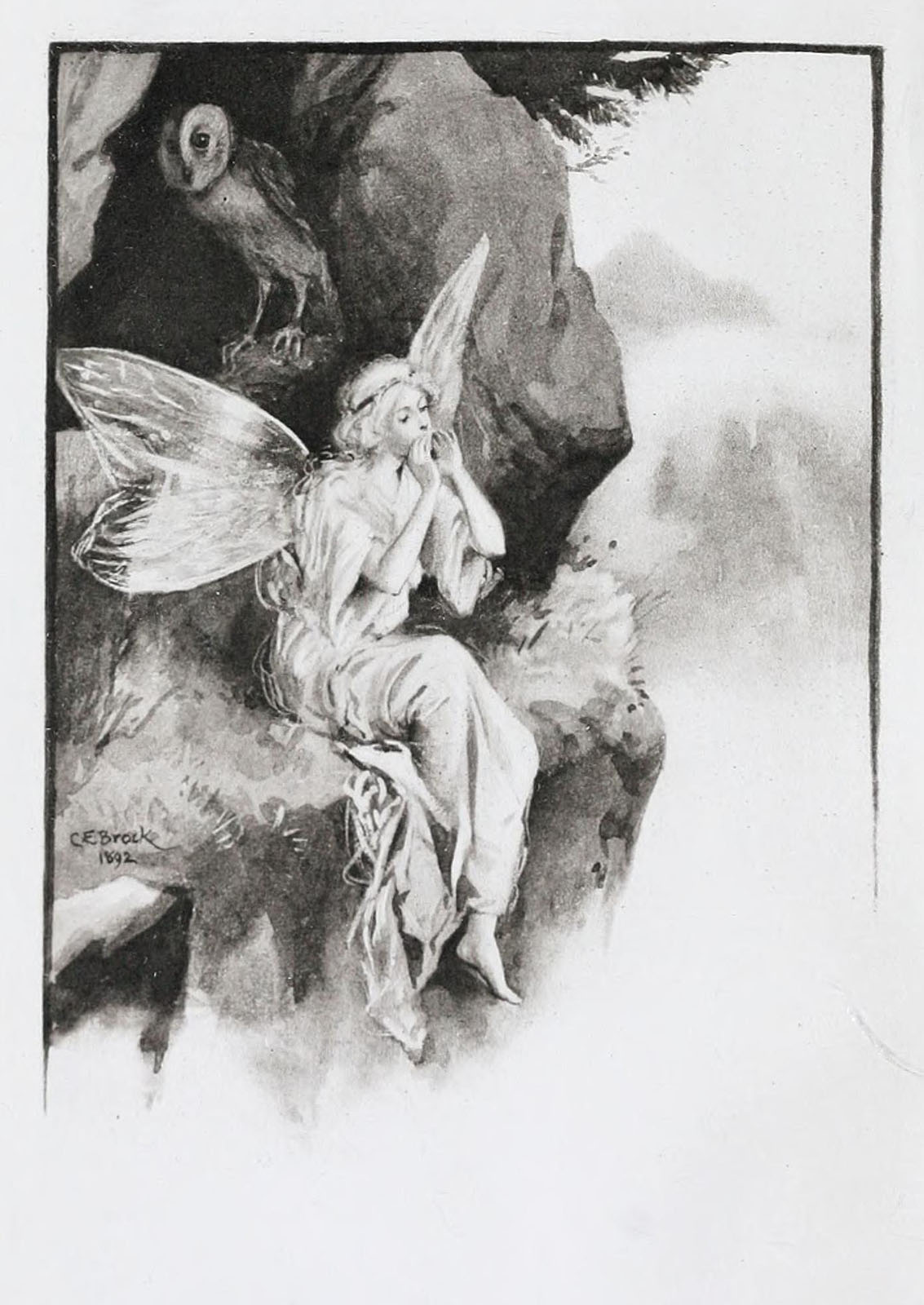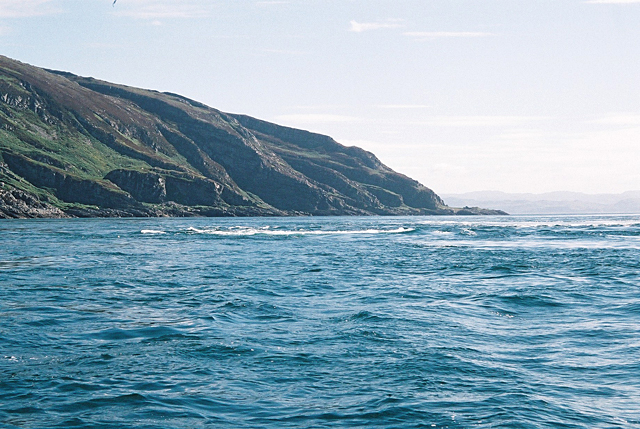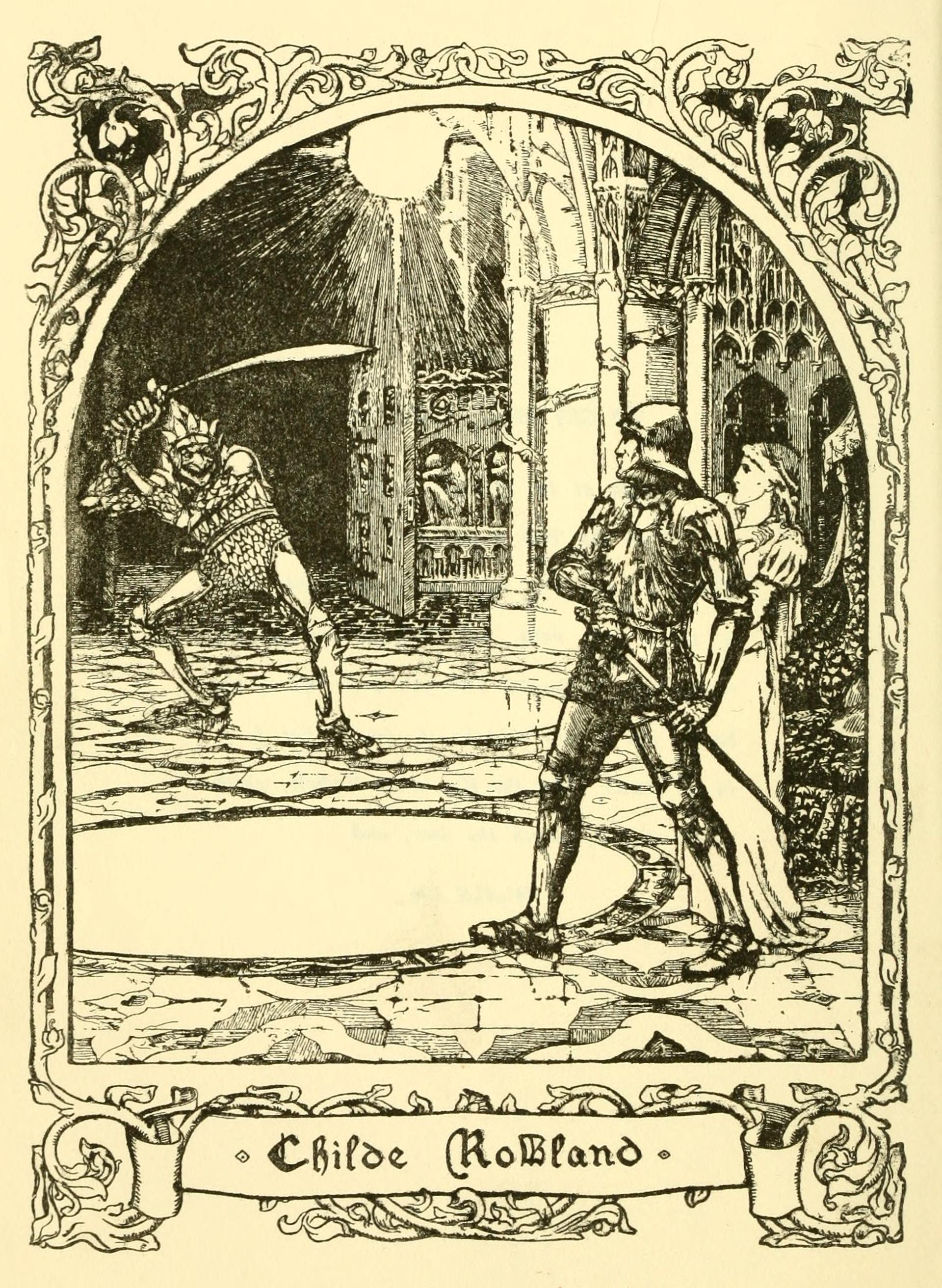|
Fairyland
Fairyland (''Faerie'', Scottish ''Elfame'', c.f. Old Norse ''Álfheimr'') in English and Scottish folklore is the fabulous land or abode of fairies or ''fays''. Old French (Early Modern English ) referred to an illusion or enchantment, the land of the ''faes''. Modern English (by the 17th century) ''fairy'' transferred the name of the realm of the ''fays'' to its inhabitants, e.g. the expression ''fairie knight'' in Edmund Spenser's ''The Faerie Queene'' refers to a "supernatural knight" or a "knight of Faerie" but was later re-interpreted as referring to a knight who is "a fairy". Folklore Fairyland may be referred to simply as ''Fairy'' or ''Faerie'', though that usage is an archaism. It is often the land ruled by the " Queen of Fairy" and thus anything from fairyland is also sometimes described as being from the "Court of the Queen of " or from the Seelie court in Scottish folklore. The Scots word or ' "fairyland" has other variant forms, attested in Scottish witch trials, ... [...More Info...] [...Related Items...] OR: [Wikipedia] [Google] [Baidu] |
Queen Of Elphame
Queen of Elphame or "Elf-hame" (-''hame'' stem only occurs in conjectural reconstructed orthography), in the folklore belief of Lowland Scotland and Northern England, designates the elfin queen of Faerie, mentioned in Scottish witch trials. In ballads and contemporary texts, she is referred to as Queen of Elphane, Elphen, or the Fairies. She is equivalent to the Queen of Fairy who rules Faërie or Fairyland. The character as described in witch trials has many parallels with the legends of ''Thomas the Rhymer'' and ''Tam Lin''. History of usage The actual text spelling is "Quene of Elfame" and other variants in the witch trial transcripts. The supposition of a ''- hame'' stem, leading to the etymological meaning "Elf-home" in the Scots language, is speculative on the part of Robert Pitcairn, the modern editor. The ''Dictionary of the Older Scottish Tongue'' lists only the '' Elfame'' and '' elphyne'' spellings, both defined as "Fairyland".DOST (''Dictionary of the Older Scottis ... [...More Info...] [...Related Items...] OR: [Wikipedia] [Google] [Baidu] |
Thomas The Rhymer
Sir Thomas de Ercildoun, better remembered as Thomas the Rhymer (fl. c. 1220 – 1298), also known as Thomas Learmont or True Thomas, was a Scottish laird and reputed prophet from Earlston (then called "Erceldoune") in the Borders. Thomas' gift of prophecy is linked to his poetic ability. He is often cited as the author of the English ''Sir Tristrem'', a version of the Tristram legend, and some lines in Robert Mannyng's ''Chronicle'' may be the source of this association. It is not clear if the name ''Rhymer'' was his actual surname or merely a sobriquet. In literature, he appears as the protagonist in the tale about Thomas the Rhymer carried off by the " Queen of Elfland" and returned having gained the gift of prophecy, as well as the inability to tell a lie. The tale survives in a medieval verse romance in five manuscripts, as well as in the popular ballad "Thomas Rhymer" (Child Ballad number 37).Child Ballad #37. "Thomas the Rymer", The romance occurs as "Thomas off ... [...More Info...] [...Related Items...] OR: [Wikipedia] [Google] [Baidu] |
Fairy
A fairy (also fay, fae, fey, fair folk, or faerie) is a type of mythical being or legendary creature found in the folklore of multiple European cultures (including Celtic, Slavic, Germanic, English, and French folklore), a form of spirit, often described as metaphysical, supernatural, or preternatural. Myths and stories about fairies do not have a single origin, but are rather a collection of folk beliefs from disparate sources. Various folk theories about the origins of fairies include casting them as either demoted angels or demons in a Christian tradition, as deities in Pagan belief systems, as spirits of the dead, as prehistoric precursors to humans, or as spirits of nature. The label of ''fairy'' has at times applied only to specific magical creatures with human appearance, magical powers, and a penchant for trickery. At other times it has been used to describe any magical creature, such as goblins and gnomes. ''Fairy'' has at times been used as an adjective, wi ... [...More Info...] [...Related Items...] OR: [Wikipedia] [Google] [Baidu] |
Fairies
A fairy (also fay, fae, fey, fair folk, or faerie) is a type of mythical being or legendary creature found in the folklore of multiple European cultures (including Celtic, Slavic, Germanic, English, and French folklore), a form of spirit, often described as metaphysical, supernatural, or preternatural. Myths and stories about fairies do not have a single origin, but are rather a collection of folk beliefs from disparate sources. Various folk theories about the origins of fairies include casting them as either demoted angels or demons in a Christian tradition, as deities in Pagan belief systems, as spirits of the dead, as prehistoric precursors to humans, or as spirits of nature. The label of ''fairy'' has at times applied only to specific magical creatures with human appearance, magical powers, and a penchant for trickery. At other times it has been used to describe any magical creature, such as goblins and gnomes. ''Fairy'' has at times been used as an adjective, with a m ... [...More Info...] [...Related Items...] OR: [Wikipedia] [Google] [Baidu] |
Álfheimr
In Norse cosmology, Álfheimr (Old Norse: , "Land of the Elves" or "Elfland"; anglicized as Alfheim), also called "Ljósálfheimr" ( , "home of the Light Elves"), is home of the Light Elves. Attestations Álfheim as an abode of the Elves is mentioned only twice in Old Norse texts. The eddic poem ''Grímnismál'' describes twelve divine dwellings beginning the stanza 5 with: Ýdalir call they the place where Ull A hall for himself hath set; And Álfheim the gods to Frey once gave As a tooth-gift in ancient times. A tooth-gift was a gift given to an infant on the cutting of the first tooth. In the 12th century eddic prose ''Gylfaginning'', Snorri Sturluson relates it in the stanza 17 as the first of a series of abodes in heaven: That which is called Álfheim is one, where dwell the peoples called '' ljósálfar'' ight Elves but the '' dökkálfar'' ark Elvesdwell down in the earth, and they are unlike in appearance, but by far more ... [...More Info...] [...Related Items...] OR: [Wikipedia] [Google] [Baidu] |
Tír Na NÓg
In Irish mythology Tír na nÓg (; "Land of the Young") or Tír na hÓige ("Land of Youth") is one of the names for the Celtic Otherworld, or perhaps for a part of it. Tír na nÓg is best known from the tale of Oisín and Niamh. Other Old Irish names for the Otherworld include Tír Tairngire (Land of Promise/Promised Land),Koch, John T. ''Celtic Culture: A Historical Encyclopedia''. ABC-CLIO, 2006. pp.1671 Tír fo Thuinn (Land under the Wave), Mag Mell (Plain of Delight/Delightful Plain), Ildathach (Multicoloured Place), and Emain Ablach (the Isle of Apple Trees). Similar myths in the northern Celtic cultures include these of Annwn, Fairyland, Avalon and Hy Brasil. Description, themes, and symbolism Tír na nÓg is depicted as an island paradise and supernatural realm of everlasting youth, beauty, health, abundance and joy. Its inhabitants are described as the Tuatha Dé Danann or the warriors of the Tuatha Dé, the gods of pre-Christian Ireland, who engage in poetry, musi ... [...More Info...] [...Related Items...] OR: [Wikipedia] [Google] [Baidu] |
Scottish Mythology
Scottish mythology is the collection of myths that have emerged throughout the history of Scotland, sometimes being elaborated upon by successive generations, and at other times being rejected and replaced by other explanatory narratives. Nature myths The myths and legends of Scotland have a "local colour" as they tell about the way of life during the olden times, apart from giving a perspective of the nature of the country during various seasons of the year. It was the belief that Beira, the Queen of Winter, had a firm hold on the country by raising storms during January and February thus preventing greenery to emerge. She was considered a tough and brutal old woman who stirred the deadly spiraling action of Corryvreckan, ushering snow, as well as torrents resulting in the overflow of rivers. Even the creation of lochs and mountains were attributed to her. Scottish mythology is not like the Greek and Roman myths as it deals with various aspects of nature. In this context ... [...More Info...] [...Related Items...] OR: [Wikipedia] [Google] [Baidu] |
Fife, Scotland
Fife (, ; gd, Fìobha, ; sco, Fife) is a council area, historic county, registration county and lieutenancy area of Scotland. It is situated between the Firth of Tay and the Firth of Forth, with inland boundaries with Perth and Kinross (i.e. the historic counties of Perthshire and Kinross-shire) and Clackmannanshire. By custom it is widely held to have been one of the major Pictish kingdoms, known as ''Fib'', and is still commonly known as the Kingdom of Fife within Scotland. A person from Fife is known as a ''Fifer''. In older documents the county was very occasionally known by the anglicisation Fifeshire. Fife is Scotland's third largest local authority area by population. It has a resident population of just under 367,000, over a third of whom live in the three principal towns, Dunfermline, Kirkcaldy and Glenrothes. The historic town of St Andrews is located on the northeast coast of Fife. It is well known for the University of St Andrews, the most ancient university o ... [...More Info...] [...Related Items...] OR: [Wikipedia] [Google] [Baidu] |
English Folklore
English folklore consists of the myths and legends of England, including the English region's mythical creatures, traditional recipes, urban legends, proverbs, superstitions, and folktales. Its cultural history is rooted in Celtic, Christian, and Germanic folklore. During the Renaissance in the 16th century, England looked to more European texts to develop a national identity. English folklore has continued to differ according to region, although there are shared elements across the country. Its folktales include the traditional Robin Hood tales and the Brythonic-inspired Arthurian legend, and their stories often contained a moral imperative stemming from Christian values. The folktales, characters and creatures are often derived from aspects of English experience, such as topography, architecture, real people, or real events. History Before England was founded in the year 927, Wessex and its surrounding areas' cultures were transformed by the invasion of the Danish Kin ... [...More Info...] [...Related Items...] OR: [Wikipedia] [Google] [Baidu] |
Seelie
Seelie is a term for fairies in Scottish folklore, appearing in the form of seely wights or The Seelie Court. The Northern and Middle English word (also , , ), and the Scots form , mean "happy", "lucky" or "blessed." Despite their name, the seelie folk of legend could be morally ambivalent and dangerous. Calling them "seelie," similar to names such as "good neighbors," may have been a euphemism to ward off their anger. Etymology The word derives from the Old English and and the Proto-West Germanic ''*sālīg'' (“blissful, happy”). The Modern Standard English word " silly" is also derived from this root. The antonym, ''unseely'' (also ''unsall'', ''unsell)'' means "unhappy", "misfortunate" or "unholy." Seelie wights Many Scottish ballads and tales tell of "Seilie wichts" or "wights," meaning blessed beings. Julian Goodare theorized that these were legendary nature spirits, similar to but distinct from fairies. Goodare additionally hypothesized that there was a sixteent ... [...More Info...] [...Related Items...] OR: [Wikipedia] [Google] [Baidu] |
Otherworld
The concept of an otherworld in historical Indo-European religion is reconstructed in comparative mythology. Its name is a calque of ''orbis alius'' (Latin for "other Earth/world"), a term used by Lucan in his description of the Celtic Otherworld. Comparable religious, mythological or metaphysical Metaphysics is the branch of philosophy that studies the fundamental nature of reality, the first principles of being, identity and change, space and time, causality, necessity, and possibility. It includes questions about the nature of conscio ... concepts, such as a realm of supernatural beings and a realm of the dead, are found in cultures throughout the world.''Gods, goddesses, and mythology'', Volume 11, C. Scott Littleton, Marshall Cavendish, 2005, , . Pp. 1286-1287 Spirits are thought to travel between worlds, or layers of existence in such traditions, usually along an Axis mundi, axis such as a world tree, giant tree, a tent pole, a river, a rope or mountains. Indo-European ... [...More Info...] [...Related Items...] OR: [Wikipedia] [Google] [Baidu] |
Childe Rowland
Childe Rowland is a fairy tale, the most popular version written by Joseph Jacobs in his ''English Fairy Tales'', published in 1890, based on an earlier version published in 1814 by Robert Jamieson. Jamieson's was repeating a "Scottish ballad", which he had heard from a tailor. Joseph Jacobs called the King of Elfland's palace "the Dark Tower" in his version, an addition he made that was not part of the original ballad. This harks to Shakespeare's ''King Lear'' and Robert Browning's poem "Childe Roland to the Dark Tower Came". Synopsis The story tells of how the four children of the Queen (by some accounts Guinevere), Childe Rowland, his two older brothers, and his sister, Burd Ellen, were playing ball near a church. Rowland kicked the ball over the church and Burd Ellen went to retrieve it, inadvertently circling the church "widdershins", or opposite the way of the sun, and disappeared. Rowland went to Merlin to ask what became of his sister and was told that she was taken to ... [...More Info...] [...Related Items...] OR: [Wikipedia] [Google] [Baidu] |







